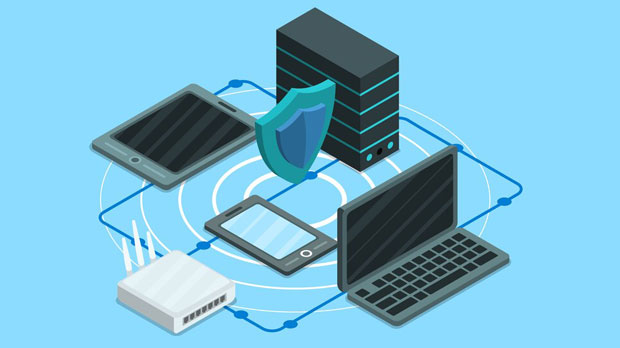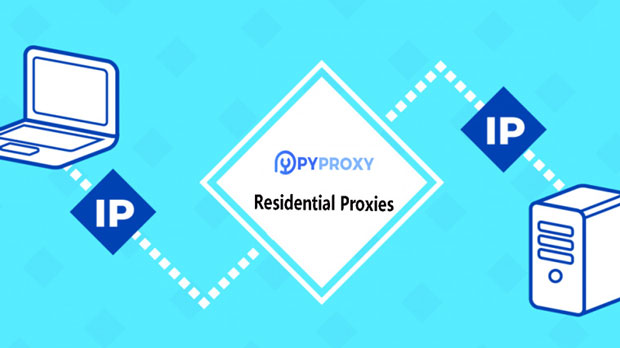In today’s increasingly connected world, the demand for smart proxy servers has grown significantly, primarily due to their ability to provide security, scalability, and flexibility. A smart proxy server acts as an intermediary between a client and the internet, enabling better control over web traffic, improving security, and enhancing performance. However, to ensure the reliability and uninterrupted service of these proxy servers, a robust high-availability (HA) architecture is essential. The design of a high-availability architecture for smart proxy servers needs to account for redundancy, load balancing, failover mechanisms, and efficient resource utilization to avoid any single point of failure. This article explores how to design such an architecture to guarantee continuous and secure proxy services. Understanding High Availability (HA) for Proxy ServersHigh Availability refers to a system's ability to operate continuously without failure for a long period of time. When designing a high-availability architecture for smart proxy servers, the primary goal is to minimize downtime, ensure continuous service, and enhance fault tolerance. This can be achieved by implementing a combination of hardware and software solutions that provide redundancy, real-time monitoring, and automatic recovery from failures.In the context of smart proxy servers, high availability ensures that if one server or service fails, another can take over with minimal disruption to the end users. This is crucial for businesses that rely on consistent, uninterrupted access to web resources, such as e-commerce platforms, financial institutions, and content providers.Key Components of a High Availability Architecture for Smart Proxy ServersThe design of a high-availability architecture for smart proxy servers involves several key components that work together to create a seamless and resilient system. These include:1. RedundancyRedundancy is one of the cornerstones of a high-availability design. It involves having multiple instances of proxy servers running in parallel, ensuring that if one server fails, another can take over without impacting service. Redundancy can be implemented at different levels, including hardware, network, and service levels.For instance, deploying proxy servers across multiple data centers or geographical locations helps to mitigate the risk of local outages. Additionally, using load balancing techniques can distribute traffic evenly among multiple proxy servers, reducing the strain on individual servers and ensuring that no single server is overwhelmed.2. Load BalancingLoad balancing is essential for distributing incoming traffic efficiently across multiple proxy servers. This ensures that no server is overloaded, which could otherwise lead to slow performance or downtime. There are various load balancing algorithms to consider, such as round-robin, least connections, or IP hash.A smart proxy server architecture should include an intelligent load balancer capable of dynamically adjusting traffic distribution based on the server's performance and health. This minimizes latency, optimizes resource usage, and ensures that user requests are handled by the healthiest and most capable servers at any given time.3. Failover MechanismsFailover is a critical feature of high-availability systems. It involves automatically switching to a backup server or system when the primary one fails. For proxy servers, failover can occur at various levels, such as the server level, network level, or application level.In the event of a failure, a failover mechanism ensures that traffic is rerouted to another healthy server without causing significant disruptions. This can be achieved using automated systems that monitor server health, such as health checks, and trigger the failover process when necessary.4. ScalabilityScalability refers to the ability to add or remove resources (such as proxy servers) as needed, to handle fluctuations in traffic. A high-availability architecture must be designed with scalability in mind, allowing the system to grow as the number of users increases or traffic demand rises.Vertical and horizontal scaling are the two primary types of scaling used in proxy server environments. Vertical scaling involves upgrading the existing server’s hardware (e.g., adding more RAM or CPU), while horizontal scaling involves adding more proxy servers to the pool. Horizontal scaling is generally preferred for high-availability systems, as it provides more flexibility and fault tolerance.5. Real-Time Monitoring and AlertsReal-time monitoring is essential to detect potential failures before they affect the system’s performance. By continuously monitoring the health of the proxy servers, network connectivity, and other critical components, administrators can ensure the system is always operating at optimal levels.An effective monitoring system should include automated alerts that notify administrators of any abnormal behavior, such as increased latency, server crashes, or network outages. This enables quick intervention and minimizes the risk of prolonged service disruptions.6. Backup and Data RecoveryA high-availability architecture should also account for data protection and recovery. In the event of a failure, especially a catastrophic one, backup and recovery mechanisms ensure that critical data is not lost and that service can be restored quickly.Regular backups of proxy server configurations, user data, and system logs should be taken and stored in a secure, geographically separated location. This allows the system to recover to its previous state with minimal data loss if a failure occurs.Best Practices for Designing a High Availability Architecture for Smart Proxy ServersTo design an efficient high-availability architecture for smart proxy servers, consider the following best practices:1. Distributed ArchitectureDistribute proxy servers across multiple data centers or availability zones to eliminate the risk of single points of failure. This provides geographical redundancy and ensures that if one region goes down, traffic can be rerouted to another without affecting the user experience.2. Implement Geo-Load BalancingUse geo-load balancing to route traffic based on the user’s geographic location. This improves performance by directing users to the nearest proxy server, reducing latency and enhancing overall system efficiency.3. Use Fault-Tolerant TechnologiesIncorporate fault-tolerant technologies, such as automatic recovery tools, self-healing systems, and distributed databases, to reduce the impact of failures. These technologies ensure that the system can recover without requiring manual intervention, keeping services running smoothly.4. Regularly Test and UpdateRegularly test your high-availability systems, including failover mechanisms, load balancing, and backup procedures. This ensures that in the event of a failure, all systems will function as expected. Additionally, keep the system updated with the latest patches and security updates to protect against vulnerabilities.Designing a high-availability architecture for smart proxy servers is crucial to ensure continuous and reliable service. By incorporating key components such as redundancy, load balancing, failover mechanisms, scalability, and real-time monitoring, businesses can ensure that their proxy servers operate without disruption. Following best practices such as distributing servers across multiple regions and using fault-tolerant technologies will further enhance the system's resilience. A well-designed high-availability architecture not only minimizes downtime but also optimizes performance, providing a secure and reliable proxy service for users.
Jun 20, 2025



































































